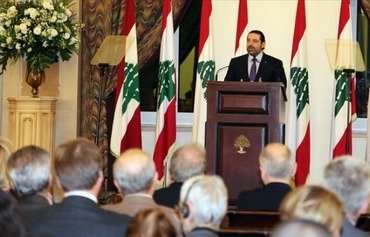Lebanon's Ministry of Social Affairs has been working to outline priorities for a new phase of the Lebanon Crisis Response Plan (LCRP) -- a joint plan between the Lebanese government and its national and international partners.
The multi-year plan has brought together more than 104 partners to assist 2.8 million highly vulnerable people, with the aim of helping Lebanon cope with the Syrian refugee crisis and finance development projects in host communities.
Since 2015, when the first phase of the plan was launched, Lebanon has received $5.64 billion in support under the LCRP. The current plan, which covers the years 2017-2020, is set to expire at the end of this year.
With Lebanon now deeply embroiled in a political, economic and public health crisis, officials stressed the ongoing need to provide the most vulnerable Lebanese with a social safety net and increase food aid to the poorest families.
![Syrian refugees in Lebanon's Bekaa Valley work in the agriculture sector. [Nohad Topalian/Al-Mashareq]](/cnmi_am/images/2020/11/09/26894-lebanon-bekaa-valley-600_384.jpg)
Syrian refugees in Lebanon's Bekaa Valley work in the agriculture sector. [Nohad Topalian/Al-Mashareq]
They also stressed the necessity of continuing the humanitarian response to Syrian and Palestinian refugees.
Lebanon in a quagmire
"The successive crises that hit Lebanon brought the country to this miserable state and increased the poverty rate among Lebanese citizens," LCRP general supervisor Asim Abi Ali said.
In the midst of all this, Hizbullah's armament and involvement in regional wars at the behest of its backer Iran keeps dragging the economy and political system down.
The party has alienated Lebanon from countries in the region and beyond who are reluctant to offer support while Hizbullah exercises control over the levers of power. Same with the IMF, which has expressed its readiness to assist Lebanon on the condition that real reforms be achieved and Hizbullah's influence be curbed.
World Bank figures released in March showed that 45% of Lebanese live below the poverty line, and 20% below the extreme poverty line.
More recent surveys show the poverty rate has risen to 60%, and that 25% are living below the extreme poverty line, bringing per capita income to less than $1 a day, Abi Ali said, noting that Syrian refugees are facing the same situation.
The Ministry of Social Affairs has been developing several programmes to respond to the country's growing needs in partnership with international organisations and donor countries, as part of the preparation for LCRP 2021.
It seeks to ensure a balanced response that takes into account the need to support refugees while also providing assistance to Lebanese citizens in order to avoid possible tension between the two communities, Abu Ali said.
Building a social safety net
The plan provides for "building and activating a social safety net by supporting host communities and empowering them with skills so they can transform from consumer communities to productive and sustainable societies", he said.
A key part of the plan "will focus on ensuring a dignified return of refugees to their home country while continuing to provide them with support in Lebanon until a proper return takes place", he said.
Efforts are focused on increasing to 55,000 the number of families benefiting from the "Poorest Families" programme, with the support of the EU, Germany, Italy, Norway and other donors.
Officials also are negotiating a loan from the World Bank in order to increase the number of families receiving social services assistance to 120,000.
"We are working in partnership with the UN High Commissioner for Refugees, UN Development Programme, donors and relevant ministries to assess the socio-economic situation of the most vulnerable segments," he said.
The plan "will seek to increase the number of areas supported from 251 to more than 300", he said, noting that $2.7 billion in funding is needed.
Updating the response plan
LCRP's deputy general supervisor Ola Boutros said the plan provides for rural development, which she said is "a necessity to getting out of poverty".
"Rural development comes in the context of supporting poor Lebanese communities hosting Syrian refugees, and has received preliminary approval from international organisations and donors," she told Al-Mashareq.
It aims to provide job opportunities for Lebanese and Syrians in agriculture, construction and the environment, she said, and to empower people to start their own small enterprises in handicrafts and industrial agricultural production.
Rural development also would help to "combat illegal smuggling, in line with UN Security Council Resolution 1680, which calls for the achievement of sustainable stability on the borders".
The LCRP plan will be updated before its launch in January to reflect changes such as "an increase in truancy among children, increase in tensions and personal indebtedness and decrease in access to services at the local level", UNHCR public information officer Lisa Abou Khaled told Al-Mashareq.
The plan provides protection, direct assistance and services to 1.5 million vulnerable Lebanese, 1.5 million Syrians and more than 200,000 Palestinian refugees, Abou Khaled said.

![Lebanon Crisis Response Plan staff meet with representatives from international organisations and officials in Beirut to discuss development programmes for 2021. [Photo courtesy of LCRP]](/cnmi_am/images/2020/11/09/26893-lebanon-plan-meeting-600_384.jpg)






